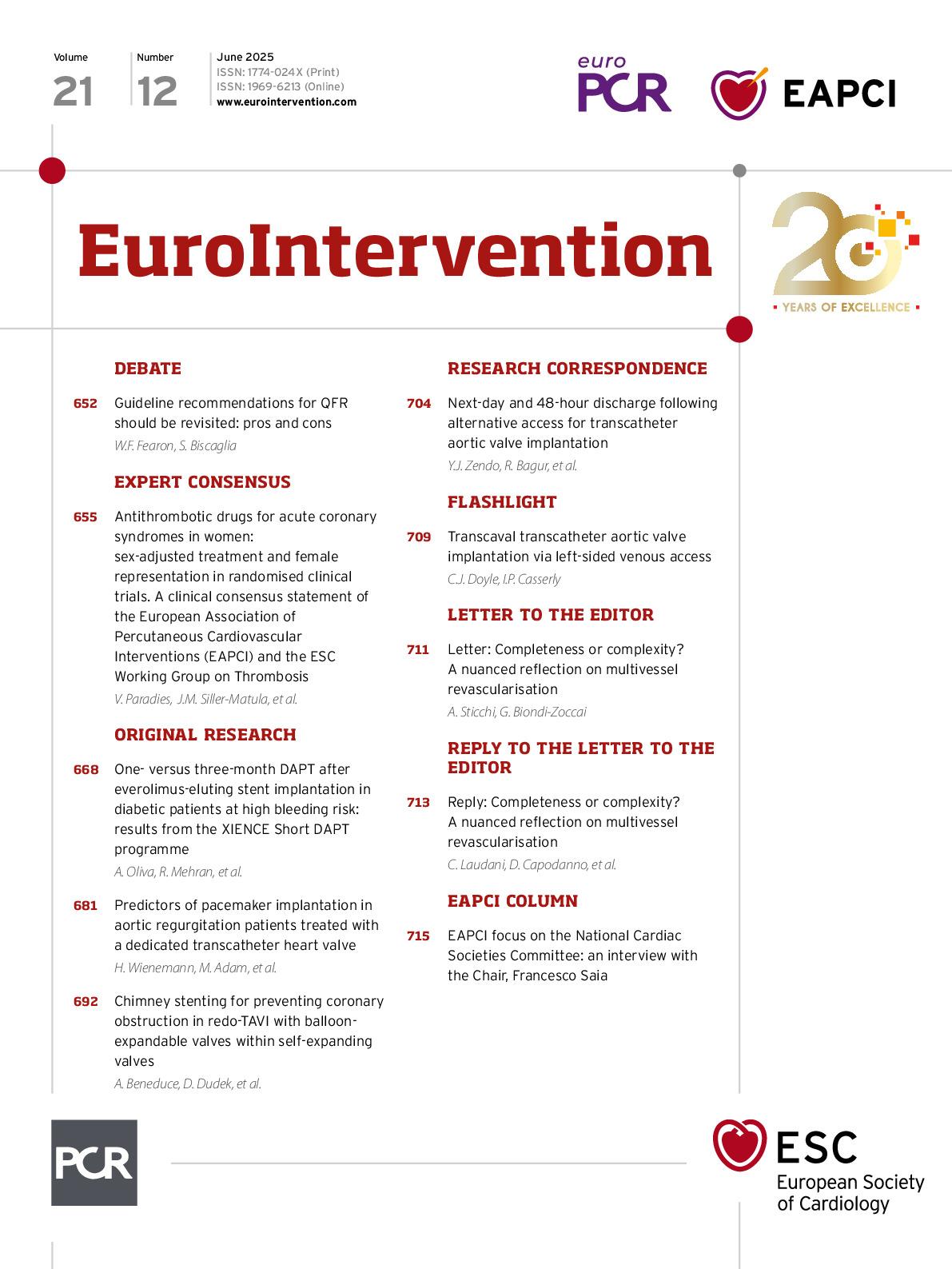There may be summer in the air and the ESC congress right around the corner, but this late spring issue looks at topics to capture the eyes of any interventionalist. Read on and find out why!
Antithrombotics and ACS in women
In an expert consensus, Valeria Paradies, Jolanta M. Siller-Matula, and colleagues from the EAPCI and the ESC Working Group on Thrombosis address the unique challenges of optimising antithrombotic treatment in women with acute coronary syndromes. As clinical outcomes remain worse for female acute coronary syndromes patients, this consensus statement identifies several weak points where sex-based discrepancies have been underexplored, from baseline differences in coagulation through the underrepresentation of women in randomised controlled trials.
Should QFR guidelines be revisited?
This is the question that William F. Fearon and Simone Biscaglia debate, taking into consideration the solid recommendation for the use of quantitative flow ratio (QFR) for the evaluation of intermediate stenoses which appeared in the 2024 European guidelines. Should QFR remain a first-line tool alongside fractional flow reserve? This is a question that is further fuelled by the results of the FAVOR III Europe trial as well as operator experience with the wire, and the debate additionally looks at whether the current nomenclature is appropriate to the tool.
Short DAPT in HBR patients with diabetes
Angelo Oliva, Roxana Mehran, and colleagues scrutinise the safety and efficacy of 1- and 3-month dual antiplatelet therapy (DAPT) in diabetic and non-diabetic patients with high bleeding risk (HBR) undergoing PCI. The 1-month DAPT regimen reduced bleeding complications without an augmentation in ischaemic events, compared to the 3-month DAPT regimen.
Pacemaker implantation in TAVI for aortic regurgitation
Do the predictors and risk factors for permanent pacemaker implantation change when a dedicated device is used for transcatheter aortic valve implantation (TAVI) in patients with aortic regurgitation? Hendrik Wienemann, Matti Adam, and colleagues evaluate the JenaValve Trilogy System, identifying pre-existing first-degree atrioventricular block and right bundle branch block as being associated with new permanent pacemaker implantation.
Chimney stenting for redo-TAVI
Alessandro Beneduce, Dariusz Dudek, and colleagues examine chimney stenting as a possible strategy to reduce the risk of coronary obstruction in redo-TAVI with degenerated supra-annular self-expanding valves. Their ex vivo bench study using different configurations of balloon-expandable platforms within the index (or original, first-placed) transcatheter aortic valve (TAV) finds that the interactions between the chimney stent and TAV frames or aortic wall can cause underexpansion or stent distortion.
Next-day discharge following TAVI via alternative access
In a research correspondence, Yohanna John Zendo, Rodrigo Bagur, and colleagues assess the safety of early- and next-day discharge in patients undergoing TAVI with alternative vascular access, using the 30-day unplanned readmission rate as a primary outcome. Regardless of the access site, at 30 days, the outcomes were similar and support the expansion of early discharge pathways for TAVI patients.

